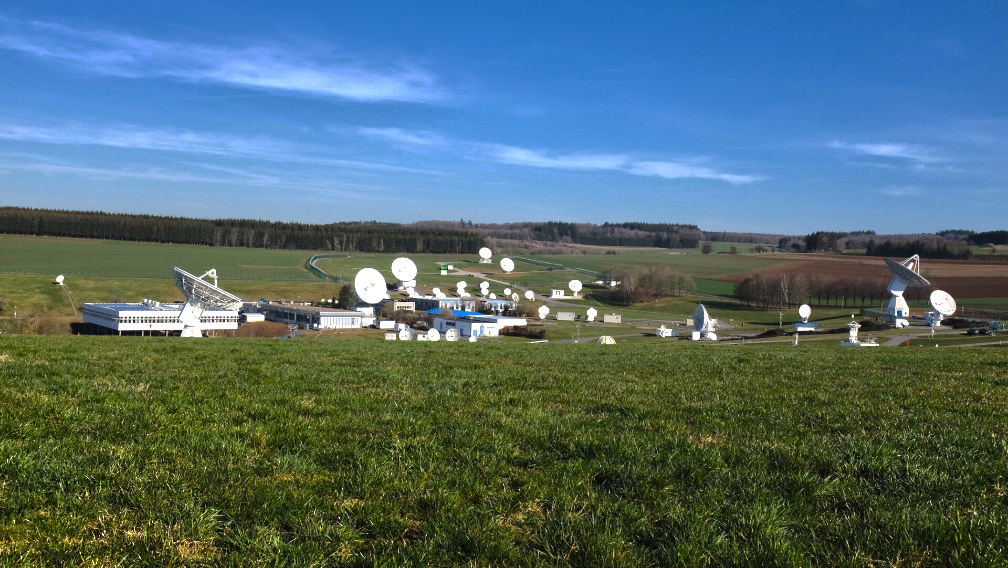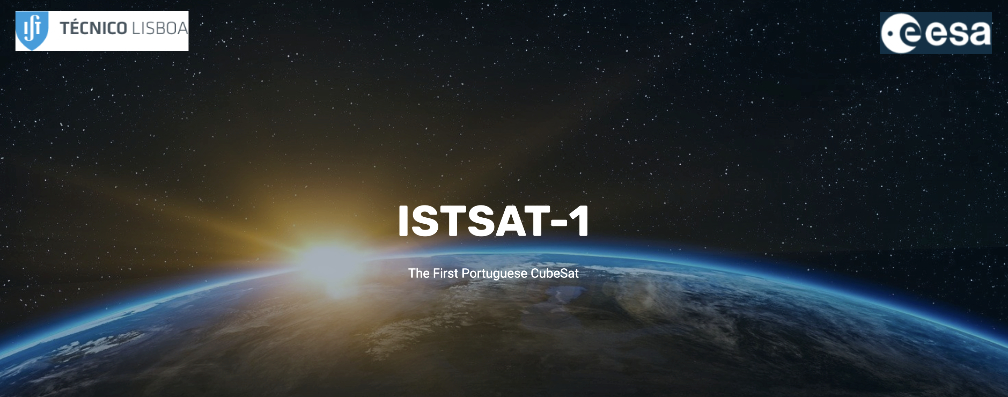
ISTSat-1, the first Portuguese CubeSat, has completed its crucial structural qualification and thermal-vacuum tests as part of ESA’s Fly Your Satellite! Program and now it‘s ready for the next destination: space.

ISTsat-1 is the first smallsat designed by students from University of Lisbon’s Instituto Superior Técnico and is part of the second edition of Fly Your Satellite! (FYS), an ESA Education program that gives university students the opportunity to design, build, launch, and operate educational satellites.
ISTsat-1 is one-unit (1U, with dimensions of 10x10x10cm) CubeSat developed to optimize and complement aircraft surveillance systems by demonstrating the Automatic Dependent Surveillance-Broadcast (ADS-B) aircraft detection technology on-orbit. The smallsat contains many components that have been designed and built by the students themselves including structure, onboard computer, electrical system and battery pack, communication subsystem, and even a bespoke ADS-B antenna and receiver.
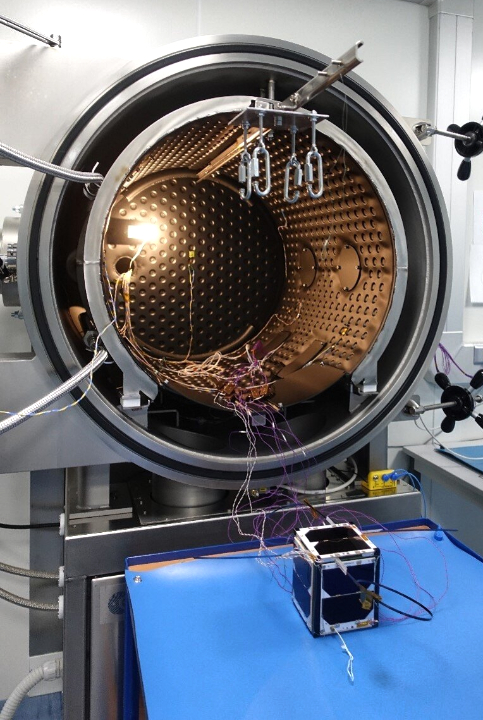
This has given students a wealth of experience but comes with the inherent additional risks of using in-house solutions. Before ISTSat-1 can undertake this task, it must go through a series of rigorous tests to maximize its ultimate chance of success.
The Portuguese team recently traveled to the CubeSat Support Facility (CSF) in ESEC (Redu, Belgium — photo at the bottom of the story.) to perform the Vibration tests. After successful completion, they traveled again to the CSF to undergo the phase of Environmental Tests in the Thermal Vacuum Chamber (TVAC), which aims at verifying the correct functionality of the spacecraft under space-representative thermal and vacuum environments.
(Photo below: students preparing to put their smallsat through the rigors of the vacuum chamber, as show to the right.)
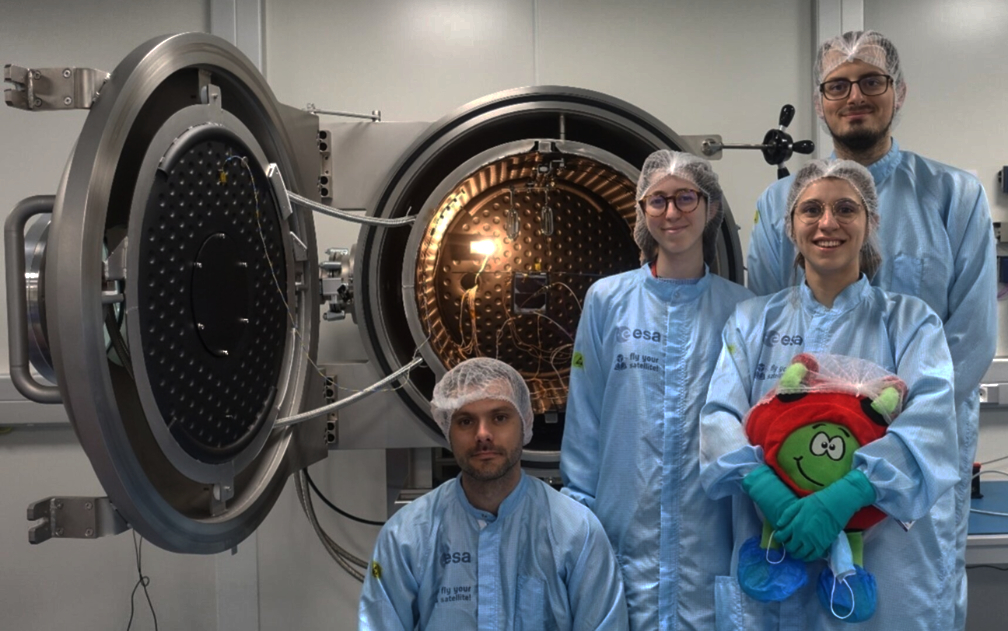
This is a major milestone for any space object built on Earth, from small CubeSats to large spacecraft.
Bake out was also run on the CubeSat for several hours at more than 50°C to ensure outgassing of any volatile compounds (photo below). The ISTSat-1 was subjected to four thermal cycles in vacuum conditions in order to simulate the environment that the CubeSat will be subject to in space and that it can properly function in such a harsh environment. The test chamber’s window was closed all this time, so the students were unable to see see the satellite hanging inside the chamber, but they could rely only on running remote functionality checks to ensure their satellite was in good health, just as they will need to do after launch.
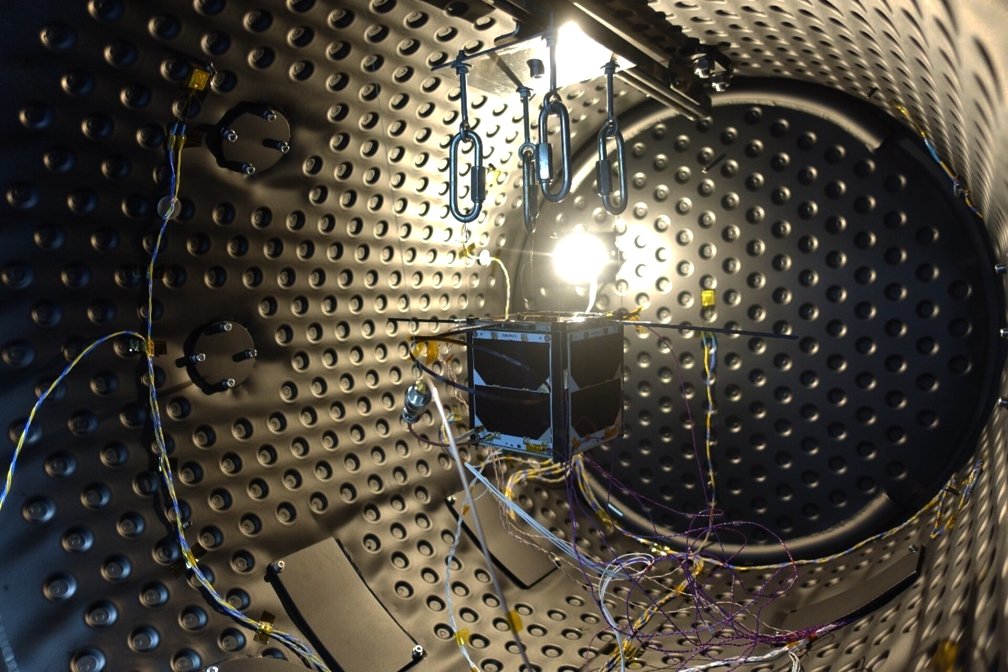
After the TVAC test is finished, the team must verify the proper functionality of the CubeSat platform and payload and perform a health check along with functional tests of all the subsystems in a reduced form. In addition, the CubeSat Support Facility is a classroom, so throughout the week the students learned about running a test campaign to professional standards with careful support from ESA Education staff.
Ultimately, the students adjusted admirably to performing lab work and responded to the activities requested by the plan commendably eventually yielding to passing a key milestone towards the ISTSAt-1 launch.
Following the travel back to Lisbon the students will be executing a Full Functional Test to verify the correct functionality of their CubeSat in preparation for flight, then, following last arrangement on the PFM, the final Flight Acceptance Review with flight authorities and ESA supervision will be conducted.
